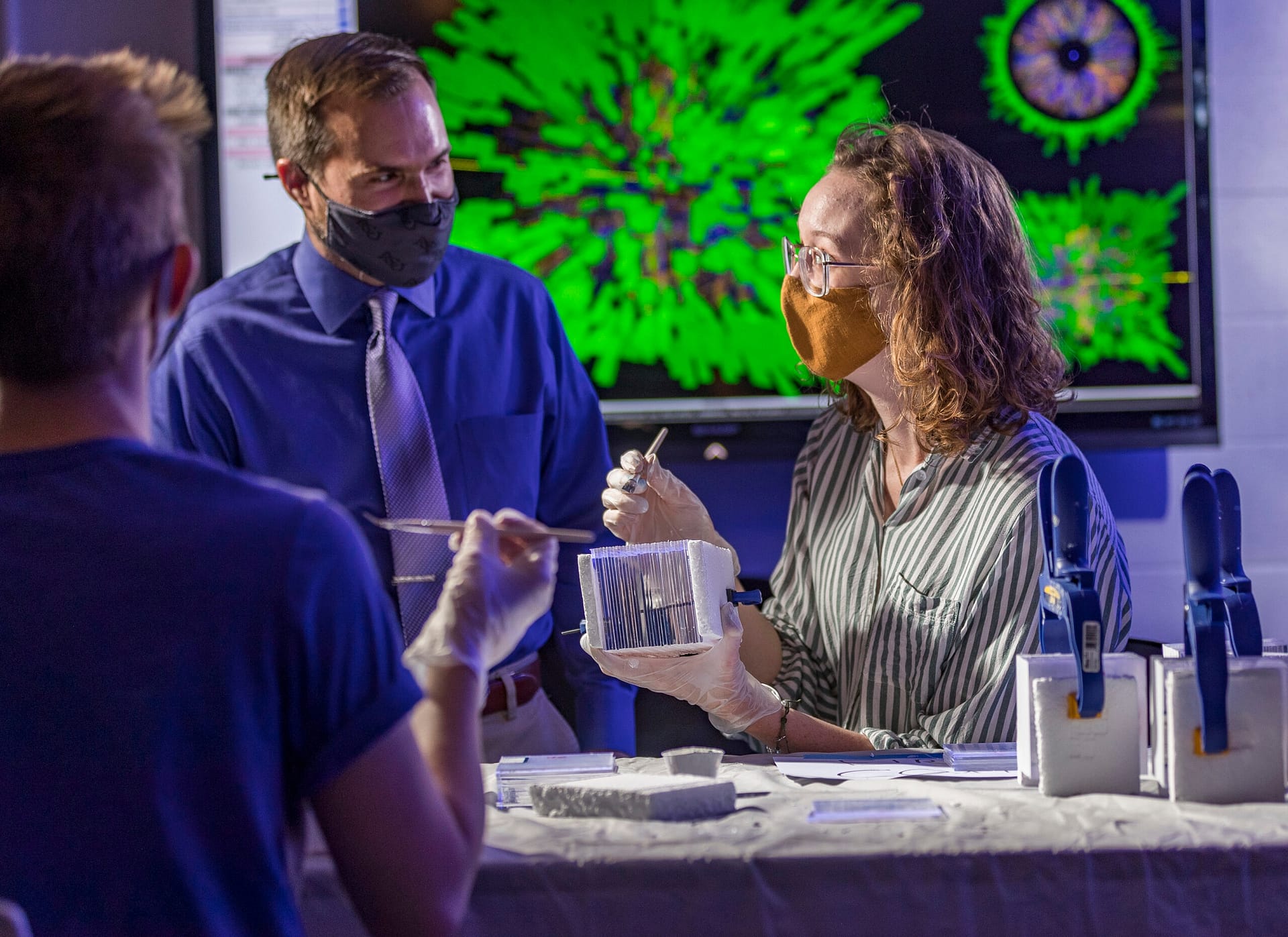Enlarge

Jeremy Enlow
In spite of challenges presented by the pandemic, undergraduate students at Abilene Christian University have devoted the past several months to preparing components for a hadron calorimeter as part of the STAR detector project – an experiment at the Relativistic Heavy Ion Collider at Brookhaven National Laboratory – and for the first time were able to complete work on the detector on campus in Abilene.
ACU is one of the lead institutions on a $2 million National Science Foundation grant to improve the STAR detector at Brookhaven, which is located on New York’s Long Island. ACU, The Ohio State University and UCLA all participated in machining scintillator tiles for STAR. Valparaiso University was involved with the final clean-up process and packaging of the components.
“We were the only institution to perform the whole process: receiving the raw materials, performing all machining and cleanup, and shipping completely finished detectors to Brookhaven,” said Dr. Jim Drachenberg, ACU associate professor of engineering and physics. “Whereas the efforts at OSU and UCLA were done by professional machinists, ours was done entirely by undergraduate students, all on our campus. What is more, we pulled this off in a global pandemic.”
While much of the university and the world remained at some level of shutdown due to the pandemic, the state of Texas and ACU deemed research to be an essential activity and students in the Department of Engineering and Physics worked from late spring through the summer and early fall machining tiles that will be important components of the STAR detector.
“We were one of the only shops in our collaboration that was given the opportunity to work safely rather than being completely shut down,” Drachenberg said. As a result, a significant fraction of UCLA’s allotment was handed off to ACU.
For decades, ACU physics students have spent their summers working in national laboratories like Brookhaven, Fermilab and Los Alamos, but this time they worked long weeks cutting and polishing scintillator tiles, wearing masks, remaining socially distanced, and gaining irreplaceable experience without leaving their home campus. They also recruited roommates who were in town and international students who weren’t able to return home to join the work, bringing biology majors, nursing majors and Bible majors to learn the processes and work alongside the physics team.
“I learned so much by working with the professors and asking questions,” said Emily Branson, a junior physics major. “It’s not just the physics knowledge; it’s being comfortable asking questions and sorting out how us making tiles in Abilene goes to a detector in New York and how we are able to have a part in that. It’s talking to professors about the overarching, big picture, applied physics and what we’re learning in class.”
Drachenberg has been involved in the overall STAR project since his graduate school work at Texas A&M University, and he later served as deputy spokesperson for the STAR detector. Even before he joined the ACU faculty in 2018, STAR colleagues asked if he could convince Abilene Christian to join the work, based on its longstanding reputation of involving undergraduates in this type of research. ACU students (including Drachenberg as a student in 2002) traveled to New York annually to work on the groundbreaking PHENIX detector at Brookhaven from 2000-18.
About the STAR detector
STAR includes several types of detectors designed to study the formation and characteristics of the quark-gluon plasma (QGP), a state of matter believed to exist at sufficiently high energy densities. Detecting and understanding the QGP offers a glimpse at the early moments of the universe. For more information, visit bnl.gov/rhic/STAR.asp.
